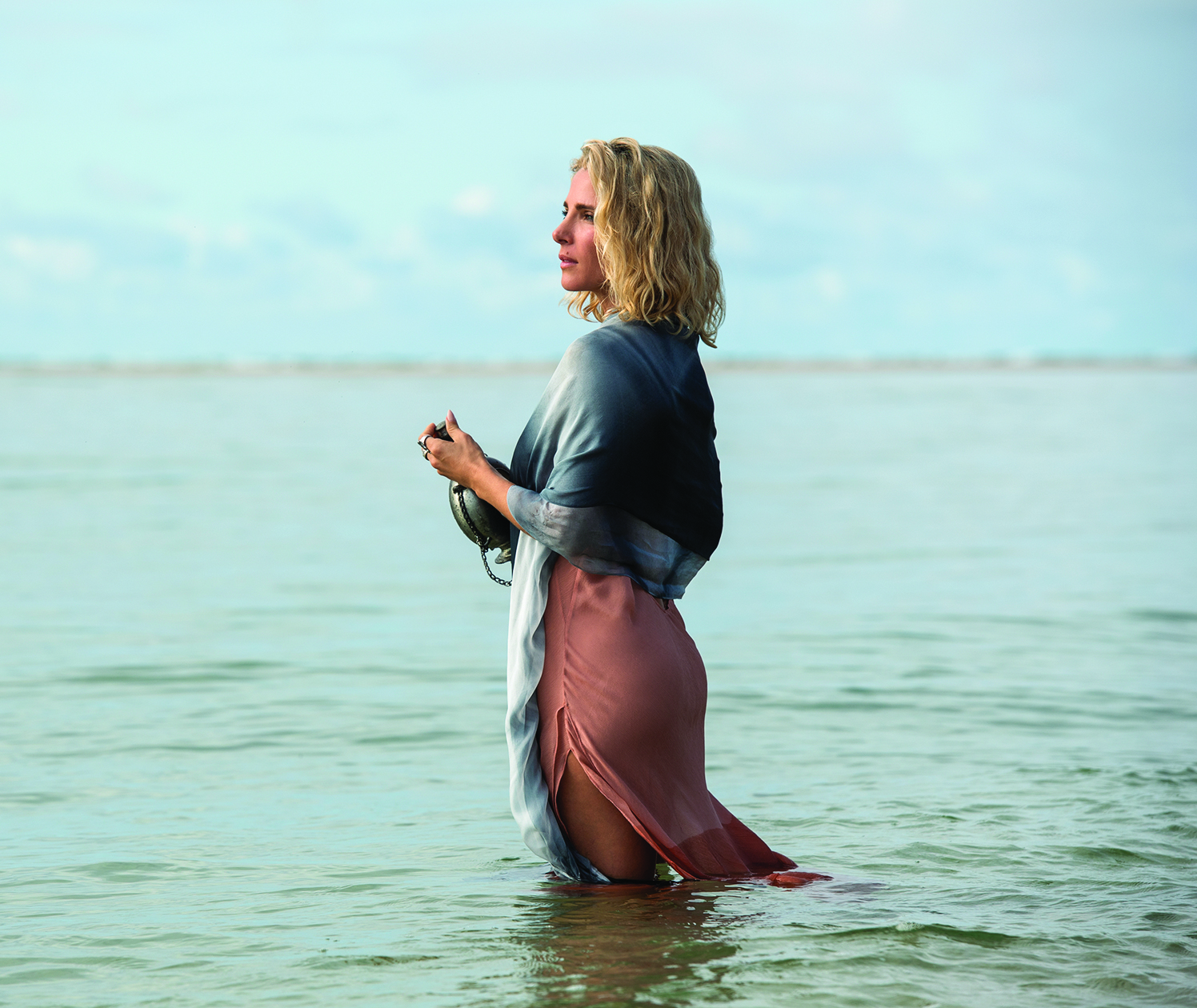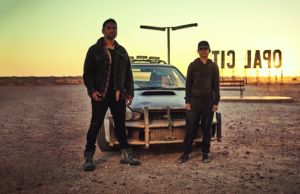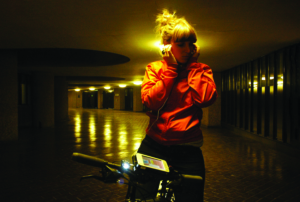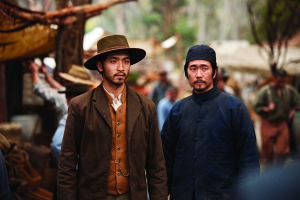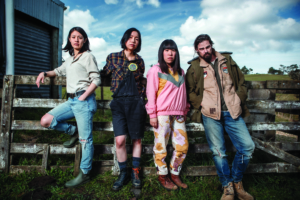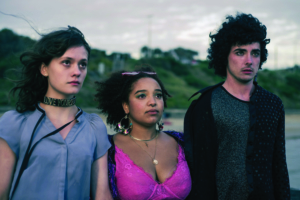For much of Australia’s screen history, genre fare has been ghettoised. On the big screen, horror, science fiction, action and the odd pure fantasy have been largely relegated to the ‘Ozploitation’ rubric – see: Razorback (Russell Mulcahy, 1984), Mad Max (George Miller, 1979), The Man from Hong Kong (Brian Trenchard-Smith, 1975) and Frog Dreaming (Trenchard-Smith, 1985), among various others. On television, such offerings – horror aside – have tended to be aimed at children, giving us the likes of Round the Twist, Spellbinder and The Girl from Tomorrow.
Many of these projects attained some measure of critical and commercial success, but generally within their mandated cultural confines. However, recent shifts in cinema and television globally have seen these once-derided genres ascend to a position of prominence. Nowadays, the success of prestige genre series such as HBO’s Game of Thrones, combined with the box-office clout of Disney’s Marvel brand as well as its rivals and imitators, is hard to ignore. Add to that the rise of digital distribution and streaming services, and their demand for content that can be marketed and consumed across cultural borders, and the screen-production sector worldwide has had no choice but to respond.
On local shores, this has resulted in a number of notable small-screen works, including Foxtel’s The Kettering Incident and the ABC’s Cleverman. Now, two streaming services with major stakes in the Australian viewing market have gotten into the game, each presenting a small-town fantasy drama, albeit of markedly different flavours: in mid December 2018, Netflix aired Tidelands, and only a few weeks later, on 1 January this year, Stan premiered Bloom.
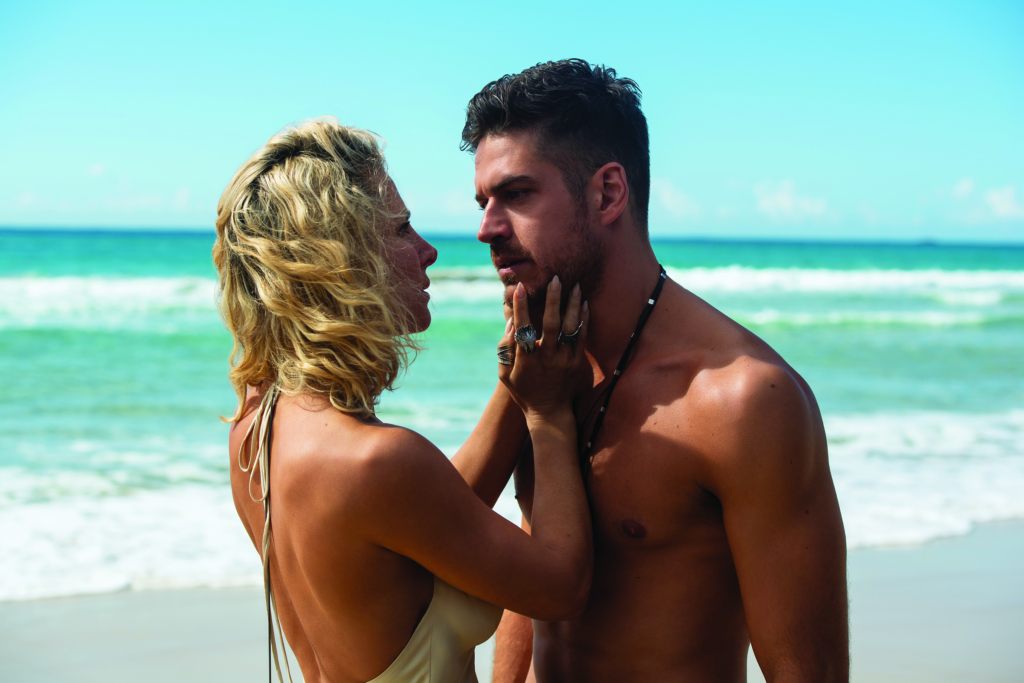
Unfolding genre
Of the two, Tidelands is the more obviously commercial; with its beachside setting and cast of predominantly young and attractive people, it could easily be summarised as ‘Home and Away with mermaids’. Created by Stephen M Irwin, Leigh McGrath, Nathan Mayfield and Tracey Robertson, the eight-part series focuses on Calliope ‘Cal’ McTeer (Charlotte Best), a recent parolee who returns to her fishing-village home of Orphelin Bay after a decade in juvenile detention. The supernatural intrudes on the narrative in the form of a local population of ‘Tidelanders’, the offspring of human sailors and mythical sirens. Led by matriarch Adrielle (Elsa Pataky), the Tidelanders live in a kind of multicultural, pansexual, polyamorous commune outside of town. To the surprise of no-one paying attention, Cal learns that she is herself a Tidelander by birth, and the show follows her efforts to uncover both her origins and the connections between the Tidelanders and her human family, including her estranged, Machiavellian mother, Rosa (Caroline Brazier), and drug-dealing brother, Augie (Aaron Jakubenko).
Of the two, Tidelands is the more obviously commercial; with its beachside setting and cast of predominantly young and attractive people, it could easily be summarised as ‘Home and Away with mermaids’.
By contrast, Bloom is a more restrained affair. The magic-realist six-part series explores how the discovery of a mysterious plant that restores youth affects the ageing population of the quiet backwater of Mullan. Created by Glen Dolman, the show centres on retired actress Gwen Reed (Jacki Weaver), who suffers from dementia, and her husband and carer, Ray (Bryan Brown). When Gwen is ‘de-aged’ by the plant (and subsequently played by Phoebe Tonkin), it seems like a miracle – until it is discovered that the effect is temporary. As the rest of the Mullan townsfolk slowly learn about the mysterious plant, it becomes a precious commodity, with a number of different characters fighting for control of the resource.
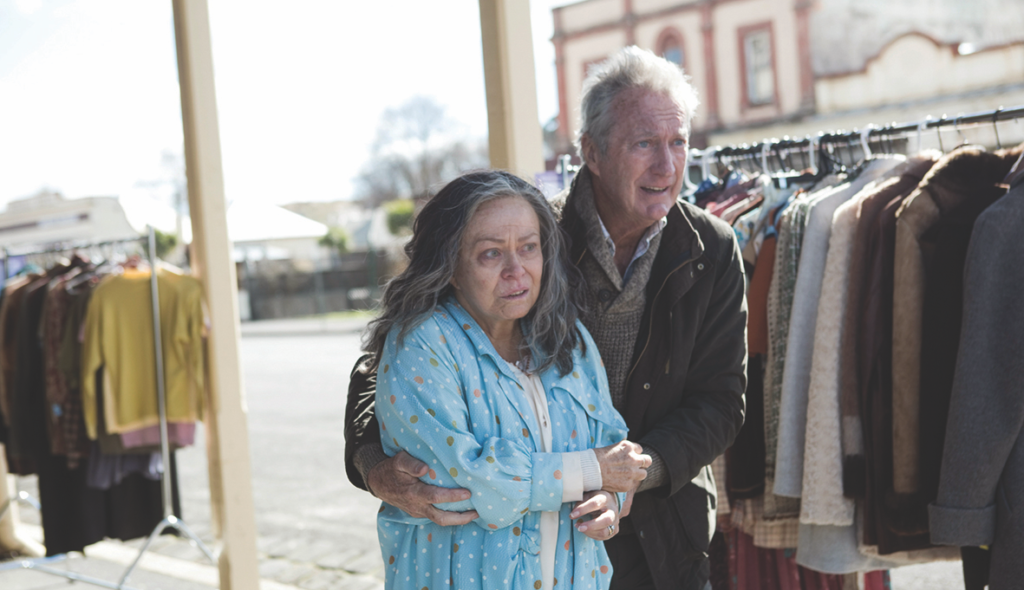
While both Bloom and Tidelands sit comfortably under the ‘genre’ – or, if you’re feeling precious, ‘heightened’ or ‘elevated’ genre[1]See J Gideon Sarantinos, ‘What Is an “Elevated” Genre?’, Gideon’s Screenwriting Tips, 19 October 2012, <https://gideonsway.wordpress.com/2012/10/19/what-is-an-elevated-genre/>; and Bilge Ebiri, ‘Widows, Black Panther, Suspiria, and the Year of the Elevated Genre Film’, Vulture, 5 December 2018, <https://www.vulture.com/2018/12/widows-suspiria-and-the-year-of-elevated-genre-films.html>, both accessed 6 March 2019. – umbrella, in terms of tone, they each approach their shared territory from very different angles. Tidelands takes its cues from violent pay-TV dramas like Sons of Anarchy and Breaking Bad, revelling in violence, nudity and crudity. It opens with a scene combining all three, with a young, naked female Tidelander, Leandra (Jet Tranter), murdering a fisherman in a particularly gruesome manner, setting the tone for the rest of the series. The show eventually teases out the mysteries surrounding the origins of the Tidelanders, but its personal rivalries and antagonisms are, for the most part, plain, and would not look out of place in any given subset of the Underbelly franchise. Indeed, the main narrative engine is a drug-trafficking arrangement between Augie and the Tidelanders, with the latter providing the former with ‘product’ to onsell.
‘Drugs’ play a part in Bloom as well, with the unnamed plant standing in for any given substance that might ‘plague’ a rural Australian town. In fact, in his review of the show for The Sydney Morning Herald, Karl Quinn summarises its central conceit as ‘a country town consumed by a drug that makes its users feel invincible but which ultimately leaves them, and their loved ones, ravaged. Ice, ice, baby.’[2]Karl Quinn, ‘Bloom Is Proof Australian TV Can Be As Bold as Anything from Overseas’, The Sydney Morning Herald, 27 December 2018, <https://www.smh.com.au/entertainment/tv-and-radio/bloom-is-proof-australian-tv-can-be-as-bold-as-anything-from-overseas-20181224-p50o48.html>, accessed 6 March 2019. But Bloom doles out its story slowly. Whereas Tidelands sets an aggressive pace, regularly delivering fights, sex and betrayals several times an episode, Bloom is elegiac. Its most recognisable genre-mates are the ‘cosy catastrophes’ of British science fiction literature once derided by author Brian Aldiss: stories, like John Wyndham’s The Day of the Triffids, in which conservative, middle-class British villagers are menaced by quiet threats beyond their ken.[3]See David Barnett, ‘The Discreet Charms of “Cosy Catastrophe” Fiction’, The Guardian, 25 November 2009, <https://www.theguardian.com/books/booksblog/2009/nov/25/cosy-catastrophe-fiction>, accessed 13 March 2019.
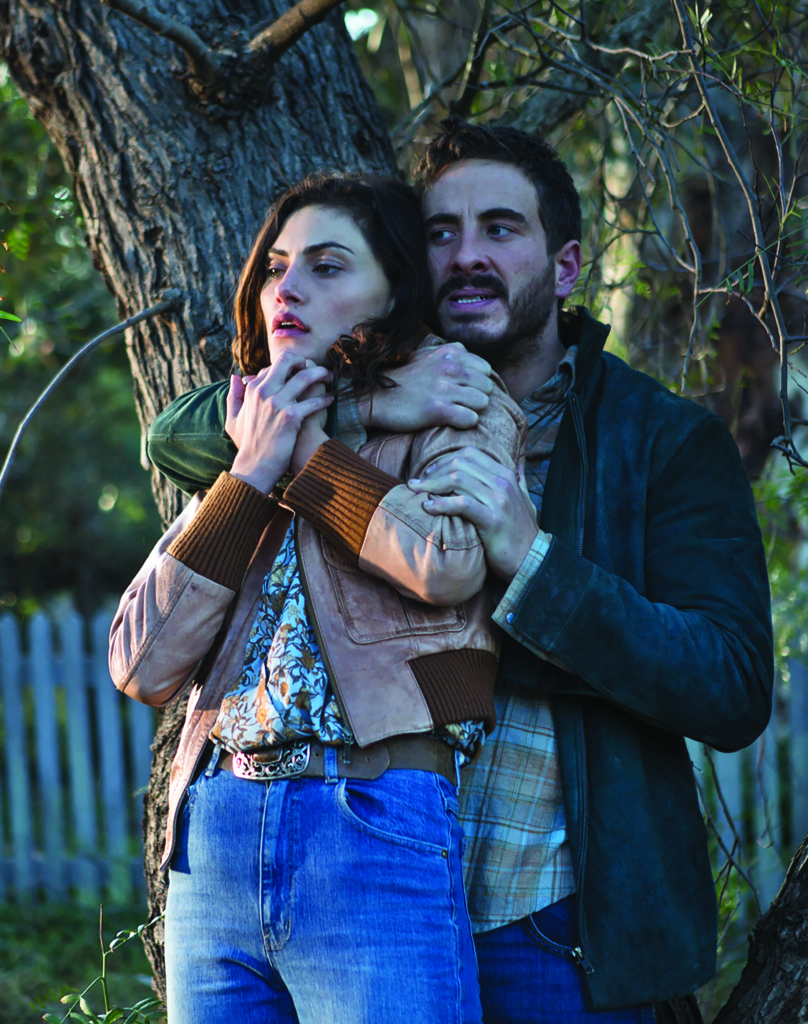
The march of time
Matching its up-tempo storytelling, Tidelands seems desperate, at times, to embrace modernity. Juggling two genres – fantasy and crime – it revels in the trappings of excess that mark the latter, with a noted preponderance for high fashion and sleek cars. Even the Tidelanders’ headquarters are a gorgeous example of postmodernist, eclectic architecture and decor – an odd refuge for an ostensibly ancient race. In Bloom, however, modernity itself, as represented by the plant and the youth it brings, is the threat. With its ageing weatherboard houses and grey, weatherworn picket fences, Mullen could be any small Australian town from the last forty years. Rarely do we see a piece of modern digital technology in the storyworld. The sets are decorated with vintage, well-used furniture and fittings, the older cast dressed in age-softened fabrics and out-of-date fashions. The town could almost literally be the past.
Tidelands seems desperate, at times, to embrace modernity … In Bloom, however, modernity itself, as represented by the plant and the youth it brings, is the threat.
Bloom mistrusts the modern age, and it mistrusts the young. When the de-aged characters – which include not only Gwen but also her former lover Max (John Stanton in old age / Sam Reid in youth) and nursing-home patient Farida (Usha Cornish / Amali Golden) – realise that the effect of the plant wears off, the extreme measures they take to secure their personal supplies are not just the follies of youth long fled, but evidence of the intrusion of dangerous modernity into safe and soporific Mullen. That modernity is not embodied by anything concrete, but rather the behaviour of the de-aged characters. Narratively, these are still old people, but now in young bodies. However, it is that very youth, the series implies, that makes them a danger.
The recklessness of youth is the essence of modernity; we see this in the way that Gwen and the others embrace chance and possibility over safety and routine, thereby threatening the sedentary status quo. In contrast, the town’s sense of morality remains anchored in the staid and empathic Ray, who struggles to deal with the now erratic and impulsive Gwen, who has decided she wants to have a baby – something she was denied as a teenager. Ray, ever cautious, is not keen on the idea, so she takes up with Max instead and proceeds to try to conceive.[4]Gwen is not the only young-again character with their mind set on sex – itinerant criminal Sam (Ryan Corr) seduces local baker Tina (Nikki Shiels) seemingly within minutes of arriving in town. Bloom carefully frames the possibility that a child might be conceived by these reckless nouveau youths as particularly troubling
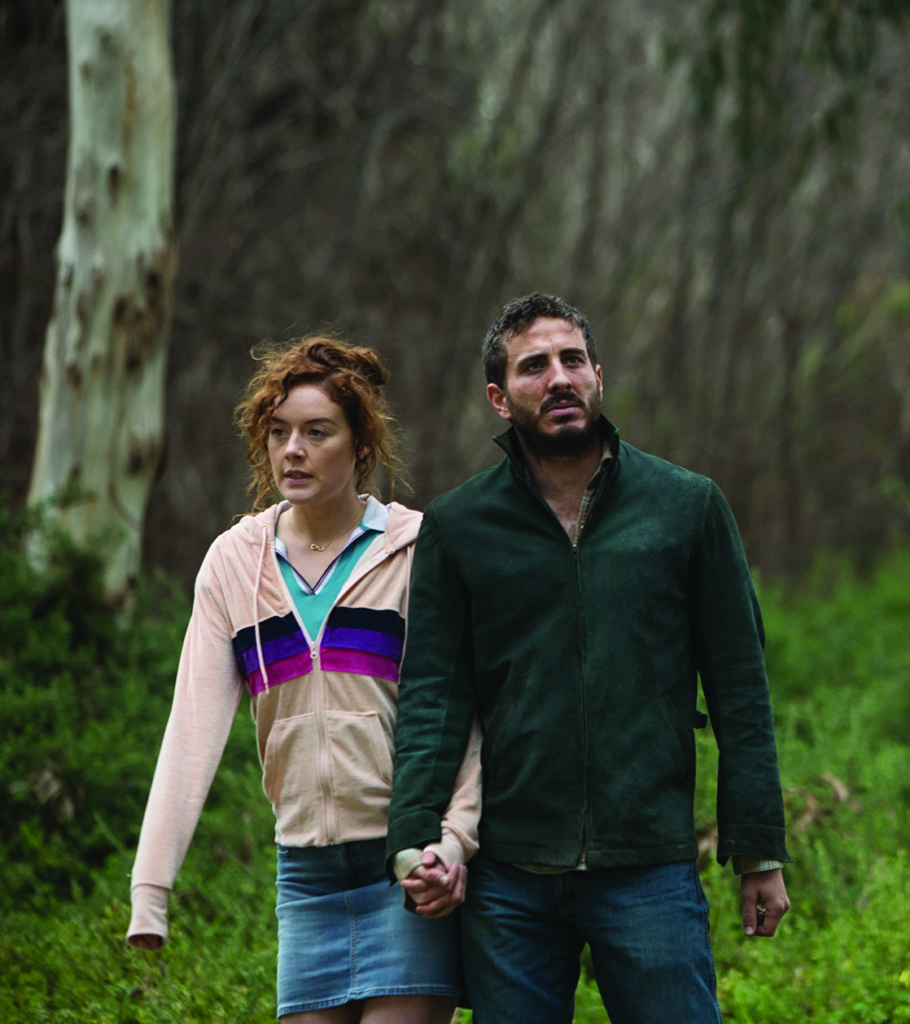
This dim depiction of madcap motherhood in Bloom is only magnified in Tidelands, which seemingly holds matriarchs in absolute contempt. The latter presents us not only with a pair of villainous mums – Pataky’s Adrielle and Brazier’s Rosa – but with an entire mythology built around abandoned children and absentee parents. We eventually learn that the sea-dwelling sirens that rear the Tidelanders drown each human sailor they seduce; months later, an infant Tidelander is left on the shore, to be cared for and/or shunned by the citizens of Orphelin Bay. As a result of this practice, the women of the town have come to loathe the Tidelanders and their siren-mothers, banding together in a secret coven called the Sea Widows. Rosa herself is a member of this collective, contributing to our understanding of her hostility towards ostensible daughter Cal. In turn, Adrielle uses the Tidelanders’ collective lack of identity to position herself as their leader: ‘We have no mothers, and so I am your mother,’ she says, in one of many portentous pronouncements.
It is not unexpected, then, that Tidelands taps into the potential of a young mother to break Adrielle’s monopoly on power – an intergenerational conflict that inverts what could be called Bloom’s intra-generational conflict (in that multiple characters essentially straddle two age groups). As in Bloom, youth is a threat to Tidelands’ status quo. Both in Orphelin Bay and within the commune, it is taken on faith that Tidelanders are sterile crossbreeds. In time, however, the series not only turns up a secretly pregnant Tidelander, Violca (Madeleine Madden), with designs on power, but also heavily hints that Cal is the subject of a rather murky prophecy to similar effect.
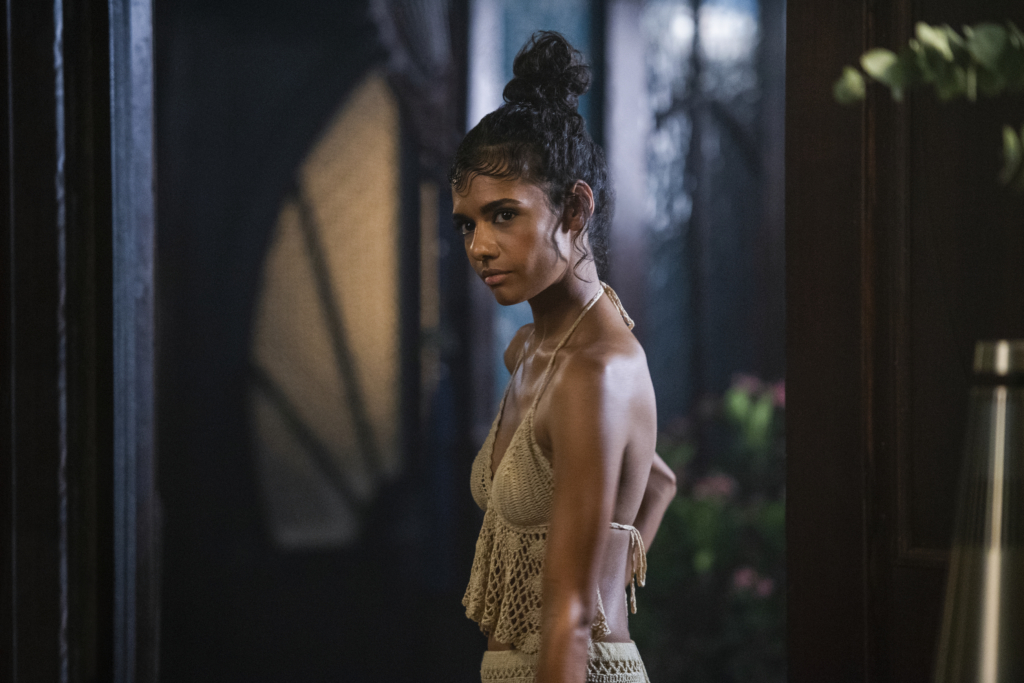
Milieu and mythology
While Bloom carefully skirts any concrete explanations for the single fantastical element it contains, Tidelands is steeped in a mythology of its own making – replete with prophecies, ancient artefacts,[5]Adrielle uses the drug money she obtains from Augie and co. to fund a worldwide search for shards of lost siren treasure, which she believes will grant her more power. magical powers and more – that runs parallel to and sometimes crosses over with the personal mythologies/histories of the human characters. It is, it must be said, a notably white mythology, which is both disappointing and somewhat inexplicable given the stated in-universe history of the setting: we’re told that sirens have preyed on human sailors for hundreds of years. The Tidelanders themselves, at least, are played by a fairly multicultural ensemble – suggesting that the characters, too, are of myriad backgrounds: Pataky has Spanish, Romanian and Hungarian heritage; Dalip Sondhi, who plays Adrielle’s right-hand man Lamar, is of Indian descent; Tranter is Asian-Australian; and Madden is a Gadigal woman. Despite this, various flashbacks only ever show the sirens interacting with characters of European descent. Surely they would have encountered the pre-colonial Indigenous inhabitants of – and, later, non-European immigrants to – the locale?
It’s particularly striking that an Australian fantasy series dabbling in ancient myths from elsewhere in the world neglects to incorporate those from the cultures of the country in which it’s set. Tidelands’ mythology is imported, a mishmash of Mediterranean legends merely dropped into an Australian setting. Later in the series, one character even makes an explicit comparison between the series’ Tidelanders and the rusalka of Slavic folklore. No such effort is made to connect the series with any Indigenous mythological creatures, characters or narratives.
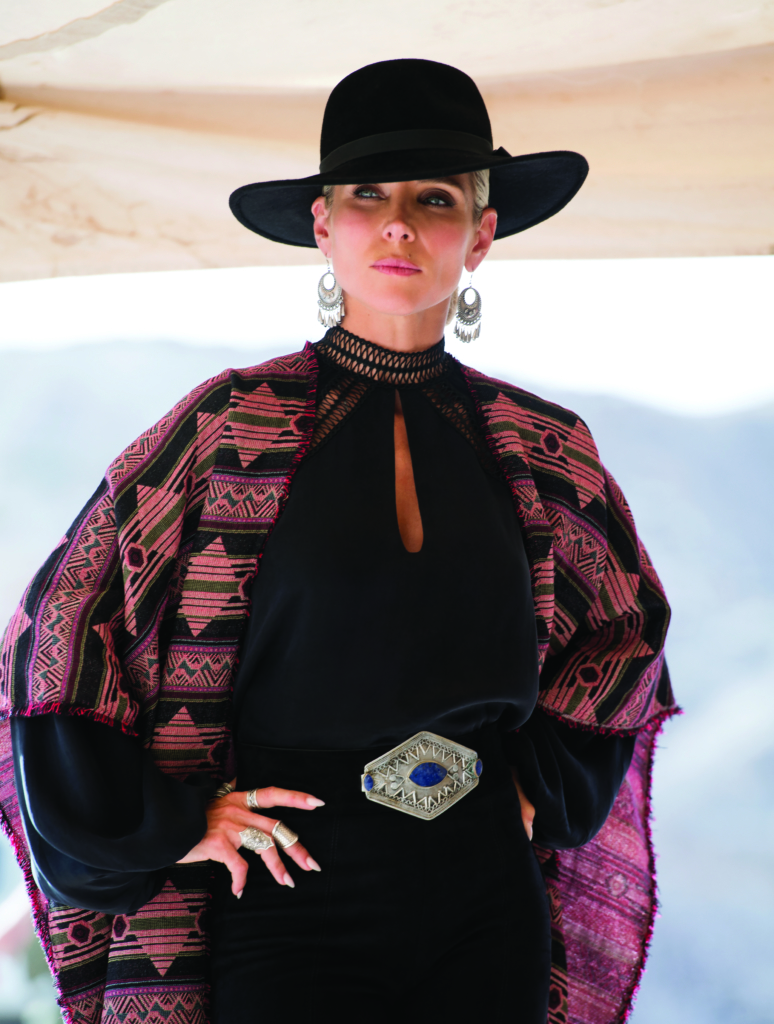
What the series does do is freely borrow from Australia’s colonial past for its own purposes. At one point, a flashback depicts a human raid on a Tidelander camp, with children being dispersed through bushland by mounted militia. At another point, we see a group of nineteenth-century Sea Widows hunting and killing a siren as payback for the deaths of their husbands. Both scenes feel as though they could have been drawn directly from the frontier wars during Australia’s early settlement, depicting atrocities committed by the British against Indigenous peoples.
Bloom, for its part, certainly takes place in a recognisably Australian setting … However, it is mired in a de facto model of the country’s past and refuses to engage with the realities and complexities of contemporary Australian life.
On the whole, though, perhaps because of the deference to the international market that comes with being a Netflix production, Tidelands downplays its sense of place. Its mythology is generic. Its characters, both supernatural and mundane, are archetypes familiar to us from any number of similar overseas productions – Cal, the reluctant heroine with hidden power; Adrielle, the sexy despot; Lamar, the conniving sidekick. Specific references to actual Australian locations, such as the cities of Sydney and Melbourne, are kept to an absolute minimum. In striving for universal accessibility, Tidelands ultimately avoids commenting on or embodying any specific Australian experience.

Bloom, for its part, certainly takes place in a recognisably Australian setting. Its language is more overtly in the Australian colloquial idiom, and its country setting gives it a familiar bushland backdrop; even the presence of iconic actors like Brown and Weaver work to situate it here more concretely. However, it is mired in a de facto model of the country’s past and refuses to engage with the realities and complexities of contemporary Australian life. Mullan, with its aged population, antique bric-a-brac and conspicuous lack of modern telecommunications technology, might as well be A Country Practice’s Wandin Valley circa 1983. Like Tidelands, Bloom lacks specificity – although, in this case, the lack is temporal, not geographical or cultural. Throughout its six episodes, the series looks to yesterday for comfort. The real myth at its heart doesn’t revolve around a youth-bestowing magical plant, but rather a simpler and more rustic Australia that, for the vast majority of viewers, simply doesn’t exist anymore. Yet the world those viewers live in – and, by extension, those viewers themselves – only intrudes on Mullen metaphorically, in the form of the magical plant/drug that changes, and causes addiction in, its inhabitants. It’s hard to believe that the inferred audience of Bloom – viewers uncomfortable with the pace and technology of the contemporary world – are the same ones most likely to engage with the series via its chosen tech-savvy platform. That the show peddles this particular brand of conservative nostalgia using digital media is oddly discomfiting.
Bloom and Tidelands are both ambitious, expensive, well-cast and well-made fantasy productions, of a type not often seen on Australian screens. However, by not engaging directly and specifically with both Australia as it stands today and the past that informs our current reality, they both fall short of their obvious potential. Our myths don’t have to speak to everyone, but they do have to speak to us.
https://www.stan.com.au/watch/bloom
https://www.netflix.com/au/title/80191239
Endnotes
| 1 | See J Gideon Sarantinos, ‘What Is an “Elevated” Genre?’, Gideon’s Screenwriting Tips, 19 October 2012, <https://gideonsway.wordpress.com/2012/10/19/what-is-an-elevated-genre/>; and Bilge Ebiri, ‘Widows, Black Panther, Suspiria, and the Year of the Elevated Genre Film’, Vulture, 5 December 2018, <https://www.vulture.com/2018/12/widows-suspiria-and-the-year-of-elevated-genre-films.html>, both accessed 6 March 2019. |
|---|---|
| 2 | Karl Quinn, ‘Bloom Is Proof Australian TV Can Be As Bold as Anything from Overseas’, The Sydney Morning Herald, 27 December 2018, <https://www.smh.com.au/entertainment/tv-and-radio/bloom-is-proof-australian-tv-can-be-as-bold-as-anything-from-overseas-20181224-p50o48.html>, accessed 6 March 2019. |
| 3 | See David Barnett, ‘The Discreet Charms of “Cosy Catastrophe” Fiction’, The Guardian, 25 November 2009, <https://www.theguardian.com/books/booksblog/2009/nov/25/cosy-catastrophe-fiction>, accessed 13 March 2019. |
| 4 | Gwen is not the only young-again character with their mind set on sex – itinerant criminal Sam (Ryan Corr) seduces local baker Tina (Nikki Shiels) seemingly within minutes of arriving in town. Bloom carefully frames the possibility that a child might be conceived by these reckless nouveau youths as particularly troubling |
| 5 | Adrielle uses the drug money she obtains from Augie and co. to fund a worldwide search for shards of lost siren treasure, which she believes will grant her more power. |
